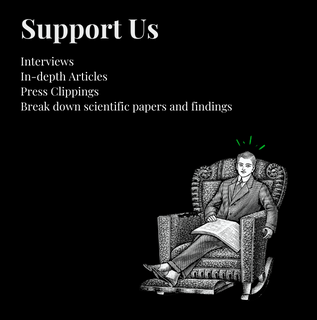In the changing landscape of nicotine consumption, electronic cigarettes emerge as protagonists in the transition towards a society less afflicted by tobacco use. However, the phenomenon of electronic cigarettes has never been free from controversy and debate, reflecting a deep polarization between advocates who see vaping as a less harmful alternative and critics who warn about still unknown risks.
While users of these devices often find themselves marginalized in political debates, science has the mission to provide clarity amid conflicting interests: not to ignore the complexities of the debate, to examine current studies and their implications for public health, to understand the importance of its role in policy formation, and the continuous search for answers in a field marked by constant technological evolution.
In the complex transition towards a society less tethered to tobacco consumption, electronic cigarettes have taken a central role in a narrative full of nuances and contradictions, generating an ongoing debate with divided opinions and marginalization.
Are they safer?
This scene is marked by significant polarization: on one side, some defend these devices as a less harmful alternative to traditional smoking; on the other, critics warn about still unknown and potentially serious risks. This debate lacks the necessary depth and maturity. Notably, electronic cigarette users, who are directly affected by these discussions, often find themselves marginalized from political forums where key decisions are made.
In this context, science is crucial in dispelling the fog of uncertainty and conflicting interests. However, it is often trapped in the same binary division that characterizes the public debate. In everyday life, the smoke of cigarettes gradually fades away, giving way to the aromatic clouds of electronic cigarettes. After nearly two decades and over 100 million consumers, the answers to the primary and crucial question seem not to satisfy skeptics and antagonists: Are they safer?
Despite years of use and study, this question continues to generate doubts and divisions within the scientific community and among the general public, leaving skeptics and detractors unsatisfied with the current answers. However, science often stands before rhetoric, challenging myths and perspectives.
Renowned institutions like the National Academies of Sciences, Engineering, and Medicine of the U.S. and the Royal College of Physicians of the UK maintain that vaping is likely less harmful than smoking traditional cigarettes. However, this statement does not escape the complexity and uncertainty surrounding the science of vaping.
Contrasting with these positions, certain authorities often present statements that question the widely disseminated idea that vaping is 95% less risky than smoking, labeling it as ‘lacking scientific foundation.’ This stance challenges the credibility of important scientific entities. The analysis supporting the 95% claim does not arise from conjectures but results from exhaustive scientific research.
The Office for Health Improvement and Disparities (OHID, formerly Public Health England) has been conducting these investigations since 2015. Their most recent report, an extensive document of over 1,400 pages published in 2022, and studies conducted by the Royal College of Physicians support the 95% claim. In that sense, switching from combustible cigarettes to vaping will always be a good choice.
A Biochemical Matter: Existing studies already provide substantial insight into the positive health impacts for smokers who switch to vaping
With over 7,000 chemicals in traditional cigarette smoke, compared to a significantly lower amount in the aerosol of their electronic alternatives, the question is whether electronic cigarettes are safer or less harmful and what ‘less harmful’ truly means.
The battle is waged at the molecular level. Conventional cigarettes carry an extensive list of chemicals, many with recognized carcinogenic and toxic properties. In contrast, vaping, while not devoid of potentially harmful substances, presents a much lower quantity, sometimes negligible. However, this reduction is not a free pass to harmlessness, as the aerosol of electronic cigarettes introduces its unique substances, whose long-term effects on human health are not yet fully known.
Clinical and epidemiological research on the long-term effects of vaping is still inconclusive, but this does not mean that current findings are insignificant or that the available scientific and empirical evidence is scarce. Science has made significant advancements in this field. Much of the difficulty in reaching a broader consensus lies not so much in scientific dilemmas but in moral ones and, more so, in commercial interests and the lack of effective government regulation.
The relative novelty and continuous technological evolution of vaping devices exacerbate this scenario. However, despite the lack of long-term data, existing studies already provide substantial insight into the positive health impacts for smokers who switch to vaping, contributing to a more complete understanding of this practice.
Research points to a revealing reality: people who smoke show higher levels of biomarkers of toxic substances compared to those who opt for electronic cigarettes. Although hopeful for vaporizer users, this information must be handled with caution. It appears that transitioning from tobacco to vaping effectively reduces exposure to these toxins, a positive advancement but not the final point of a more complex journey.
For someone who is not familiar with the details of scientific research and seeks information only through corporate media, the current landscape of studies on vaping can seem quite confusing. On the one hand, there are studies suggesting that vaping could worsen respiratory conditions such as asthma and bronchitis, and this affects not only current users but also young people who have never smoked. On the other hand, there is a series of studies indicating an improvement in respiratory symptoms in people who smoke with these conditions when they switch to electronic cigarettes.
Controlled and randomized clinical trials, considered the gold standard in medical research, support this improvement. This finding offers a glimmer of hope for those seeking alternatives to traditional tobacco. In an ideal world, science would guide public policy. Still, in reality, it is often overshadowed by conflicting interests and the influence of large corporations, complicating its role in promoting public health.
One of the most persuasive arguments in favor of vaping is its influence on lung and vascular health. People who smoke and switch to electronic cigarettes experience notable improvements, offering a ray of hope for those caught in the grip of smoking. However, it is crucial to understand that improvement does not mean a cure, and vaping should not be considered a panacea for the damage accumulated from years of tobacco use.
On a positive note, those who exclusively use electronic cigarettes, mostly former smokers, report fewer respiratory symptoms than tobacco smokers. This suggests that vaping could be considered a lesser evil. Although this reduction in symptoms is encouraging, we must not lose sight of the importance of researching the long-term effects of vaping, especially in markets where regulation is scarce or non-existent.
From the confines of laboratories, researchers also look at the potentially harmful effects of electronic cigarette aerosol on cells and experimental animals. However, the challenge lies in how these findings translate to the complex human organism, a task that is neither straightforward nor always applicable. Human studies, so far, have mainly focused on short-term effects, which are not necessarily a predictor of long-term diseases.
Interestingly, although vaping can initially negatively affect endothelial function, those who switch from traditional to electronic cigarettes often experience normalization of this function, a promising sign for cardiovascular health. In the realm of cancer, current evidence indicates that the risk associated with electronic cigarettes is considerably lower than that presented by tobacco cigarettes.
While this is a reassuring finding, some studies have raised concerns, pointing to the need for prolonged observation of vapers. This is where science plays a fundamental role: in ongoing research and its commitment to unraveling the mysteries. Only through this relentless pursuit can we obtain a more complete and precise understanding of the true risks of vaping, both absolute and relative.
In an ideal world, science should be the guiding compass of public policy. Still, in reality, it often finds itself submerged in an ocean of conflicting interests and distorted perceptions, where the currents of rhetoric and the influence of large corporations and capital interests drown out the voices of public health.
The transition towards a reduced presence of tobacco, marked by the evolution and popularity of vaping, requires an ongoing dialogue focused on science and public health.
The conversation needs to be transformed. In this context, the scientific debate on tobacco harm reduction products shows the urgency for clarity and honesty in the discussion.
Many scientists, navigating these turbulent waters, have reached a provisional but significant conclusion: vaping is potentially much less dangerous than smoking, and promoting the switch from one to the other has a positive impact on both individual and collective health. This position is based on the drastic difference in the number of harmful chemicals between tobacco smoke and the aerosol of electronic cigarettes, as well as on the reduced levels of biomarkers of toxic substances in vaporizer users.
Thus, the debate on vaping reflects the complex interaction between science, public health, economic interests, mindset, and social perception. As researchers continue their search for definitive answers, society finds itself at a crossroads between caution and the acceptance of a technology that could redefine the future of nicotine consumption.
Although the path to consensus still seems nebulous, one thing is certain: the world of tobacco and its electronic counterpart is transforming fully, and we must adapt to these changes. This debate on vaping versus smoking is emblematic of our challenges in an era marked by the daily coexistence of information, misinformation, and constant technological innovation.
While electronic cigarettes offer many advantages over tobacco in terms of exposure to harmful substances and their effects on lung and cardiovascular health, the story is not as simple as moving from bad to good. We must find the middle ground and achieve balance, always under the certainty of human complexity.
The journey towards a world less dependent on tobacco is intricate and uncertain. The story of vaping is still being written, and each new chapter brings us a little closer to understanding, though never to simplicity. What is clear is that this is a conversation that must continue, guided by science and with public health as our guiding star.
In the quest to unravel the enigma surrounding the ‘cloud’ of vaping and its consequences for everyone’s health, committed and meticulous science becomes indispensable, immune to the turbulences of commercial interests and political pressures. In this context, scientific research is needed as a beacon of clarity, dedicated to providing answers firmly rooted in evidence and objectivity.
With this commitment to the truth, science has the potential to dispel the shadows of doubt surrounding vaping and guide our policies and choices toward a horizon where people’s health is the ultimate port of call. Through this path, anchored in deep and thoughtful knowledge, there arises the opportunity to clear the air laden with questions and to chart a course toward collective well-being. The challenge is monumental, but the destination is clear: to unveil, with responsibility and humanity, the vaping cloud’s mystery and advance toward a healthier and more conscious future.


